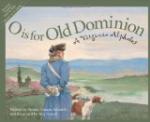At first glance, each of the cabins would be taken as a general living-room. Each was that; but also a little of everything else. At customary intervals, one compartment or the other would become a dining-cabin. Again, innocent looking bits of wall would give way, and there would appear beds, presses, lavatories, and a lamentable lack of room.
Both cabins were finished in old oak, dark and dead; there is a superabundance of brightness on the water. The ceilings showed the uncovered, dark carlines or rafters. The walls had, along the top, a row of niches for books; and along the bottom, a deceptive sort of wainscoting, each panel of which was a locker door. Between book niches above and wainscoting below, the walls were paneled in green burlap with brown rope for molding. The furnishing was plain.
[Illustration: The houseboat gadabout.]
The kitchen or galley was rather small as kitchens go, and rather large as galleys go. It would not do to tell all the things that were in it; for anybody would see that they could not all be there. Perhaps it would be well to mention merely the gasoline stove, the refrigerator, the pump and sink, the wall-table, the cupboards for supplies, the closet for the man’s serving coats and aprons, the racks of blue willow ware dishes, and the big sliding door.
One has to mention the big sliding door; for it made such a difference. It worked up and down like a window-sash, and always suggested the conundrum, When is a galley not a galley? For when it was down, it disclosed nothing and the galley was a galley; but when it was up, it disclosed a recess in which two little gasoline motors sat side by side, and the galley was an engine-room.
It was a very ingenious and inconvenient arrangement. Operating the stove and the engines at the same time was scarcely practicable; and we were often forced to the hard choice of lying still on a full stomach or travelling on an empty one.
There yet remains to be described the crew’s quarters. The crew consisted of two hands, both strong and sturdy, and both belonging to the same coloured man. Though our trusty tar, Henry, had doubtless never heard “The Yarn of the ‘Nancy Bell’” and had never eaten a shipmate in his life, yet he had a whole crew within himself as truly as the “elderly naval man” who had eaten one. There was therefore no occasion for extensive quarters. Fortunately, an available space at the stern was ample for the crew’s cabin and all appointments.
All these interior arrangements were without the makeshifts so often found in houseboats. There were no curtains for partition walls nor crude bunks for beds. People aboard a houseboat must at best be living in close quarters. But, upon even the moderate priced craft, much of the comfort, privacy, and refinement of home life may be enjoyed by heading off an outlay that tends toward gilt and grill work and turning it into substantial partitions, real beds, baths, and lavatories.




